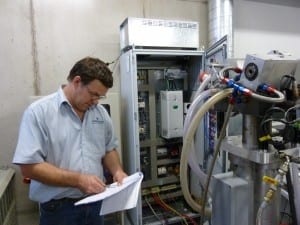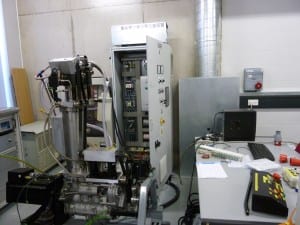Tim Smith⇑ Chris Bingham Paul Stewart Rich Allarton Jill Stewart School of Engineering, University of Lincoln, Lincoln, UK Tim Smith, School of Engineering, University of Lincoln, Brayford Pool, Lincoln LN6 7TS, UK. Email: tismith@lincoln.ac.uk Proceedings of the Institution of Mechanical Engineers, Part G: Journal of Aerospace Engineering April 2013 vol. 227 no. 4 586-598 Abstract […]
MAAT EU FP7 Airship Project
Multibody Advanced Airship for Transport Electrical Power Distribution System
Transport for the 21st Century—The Challenge – www.eumaat.info The MAAT Electrical Power Distribution System – Four physical power distribution architectures have been investigated that are capable of harvesting and distributing 4MW of electrical energy: Primary Distribution Secondary Distribution Matrix Distribution Hybrid or “Ad hoc” Distribution. It is envisaged that the wiring will be through the body […]
‘PERGAVE’ Technology Challenge
Members of the Institute are attending the PERGAVE Technology Challenge on 10 May 2012, National Composites Centre, Bristol BAE Systems Military Air & Information (MAI) is holding a launch event for an anticipated technology challenge programme linked to its business strategy. The PERGAVE (Persistent Green Air Vehicle) challenge is to … Continue reading
MAAT International Airship Project

International research collaboration for Lincoln
Lincoln’s PVC Research, Professor Paul Stewart and Professor of Energy Conversion, Chris Bingham, have been awarded high profile European funding for a new research project.
The MAAT (Multibody Advanced Airship for Transport) project sees Profs Stewart and Bingham working as part of a global consortium to take forward airship technology, through funding from the Seventh Framework Programme (FP7).
The project is being led by the Universita di Modena e Reggio Emilia, Italy and the Lincoln team will focus on ‘Energy and Propulsive Systems’ with Paul in the role of principal investigator and Chris as co-investigator.
Prof Stewart said: “Airships are currently being developed by various organisations. They open up possibilities for the future of air travel; they are quieter, don’t require runways and are low carbon.
“Chris and I will be looking at how we can make the most efficient use of the energy generated by the photovoltaic cells on the outer body of the airships. We will focus on elements such as the electrical power systems, energy storage and propulsion and the control systems used for flying. By introducing innovative systems we can overcome the limitations of traditional propellers at high altitudes.”
The €multi-million project will run over three years and is one of two FP7-funded projects recently secured by the University. FP7 is the EU funding programme for research and technological development and is open to all disciplines – including social sciences and humanities. With a budget of €50 billion FP7 funds a range of project types, from large scale strategic collaborative research to individual fellowships. It runs until 2013, with new calls for proposals each year.
Why participate in FP7 research?
- • Internationalisation of research
- • Benchmarking performance in European context
- • Range of project types (multi-disciplinary, industrial)
- • Networking opportunities – research and teaching
- • Opening up new opportunities
- • Mobility of staff and students
- • Research capacity
- • Pan-European university networks
- • Links to ‘third stream’ activities
The UK does exceptionally well out of all the countries involved in FP7. A recent UKRO report highlighting UK success rates found that:
- • proposals from UK applicants were the second highest number from any country (as of October 2010).
- • the UK has an above average applicant success rate: 24.5%, as opposed to 21.9% for the EU as whole. It also has a higher ‘financial contribution’ success rate: 22.6% as opposed to 20.9%.
- • to date, 3721 grant agreements have been signed. 19% of participants are from the UK, the second highest number of participations.
- • 23.3% of EU funding has gone to UK beneficiaries; again, this is the second largest budget share.
- • the UK also has an above average SME success rate: an applicant success rate of 22.1%, against EU 19.4%; a financial contribution success rate of 21.4%, against EU 18.3%.
The University’s David Young, Senior Research Facilitator in the Research and Enterprise Office, is keen to advise and support staff with applications to this fund. For more information about the application process or the specific programmes within the framework contact him via email or on ext 6902.
Control Techniques re-commission the Lotus experimental engine

The rotary electrical drive on the Lotus free-piston experimental engine has now been re-commissioned by an engineer from Control Techniques.
The rig is now ready to be transported from the ThinkTank to its new home in an engine test cell in the new building.
The engine is part of a long-term R&D programme into new engine technologies and combustion control techniques led by Prof Paul Stewart, in collaboration with Lotus Engineering in Norwich.
The programme is looking at advanced drive trains for Hybrid Electric vehicles.

The CT drive supplies the Emerson 15kW Permanent Magnet AC Motor (PMAC) which is coupled to the crankshaft and acts as a motor-generator to control piston trajectory when the linear free piston engine is tethered to the crankshaft.